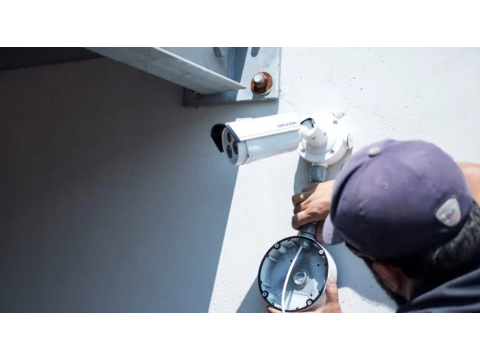Outdoor Surveillance Camera Installation Guide
Installing outdoor surveillance cameras requires attention to various factors, including weatherproofing, vandal resistance, and secure mounting. Follow this guide to ensure your outdoor cameras are set up for optimal performance and durability.
1. Preparing for Installation
Weather Protection
Outdoor cameras must be shielded from adverse weather conditions. Choose cameras with a high IP rating (e.g., IP65 or higher) to ensure resistance to dust, rain, and extreme temperatures.
Vandal Resistance
- Use vandal-resistant cameras with robust housings, especially in high-risk areas.
- Install cameras in hard-to-reach locations or use dome cameras with metal casings for additional protection.
Optimal Placement
- Mount cameras under eaves, overhangs, or other structural features to shield them from rain and snow.
- Avoid areas where falling debris (e.g., icicles or tree branches) might damage the camera.
2. Mounting Outdoor Cameras
Using Mounting Brackets
Most outdoor cameras come with brackets allowing horizontal and vertical adjustments. Ensure the bracket is securely attached to a sturdy surface to withstand wind and other forces.
Pole or Wall Mounting
- Wall Mounting: Attach the camera to a solid wall or building structure for stability.
- Pole Mounting: Use specialized brackets to secure the camera to poles, ensuring proper alignment and vibration resistance.
Avoiding Vibrations
- Install cameras on stable structures to minimize vibrations that can blur footage.
- Reinforce mounting points if needed for additional stability.
3. Electrical and Signal Connections
Cable Management
- Use weatherproof conduits or sleeves to protect cables from moisture and mechanical damage.
- Avoid running cables parallel to power lines to prevent interference.
Power Supply Considerations
- Use proper cable gauges to minimize voltage drops over long distances.
- For IP cameras, consider Power over Ethernet (PoE) for simplified installation and power supply.
Protection Against Electrical Surges
- Install surge protectors to guard against power fluctuations and lightning strikes.
- Use grounding techniques to prevent electrical damage.
4. Tips for Analog and IP Cameras
Analog Cameras
- Use coaxial cables for short distances, or switch to twisted-pair cables with baluns for longer runs.
- Protect connectors with weatherproofing materials or housings.
IP Cameras
- Install network switches or PoE injectors as needed for IP systems.
- Secure all network equipment in weatherproof enclosures when installed outdoors.
5. Final Checklist
Before completing the installation, ensure the following:
- Camera angles cover the intended surveillance area without obstructions.
- All cable connections are secure and weatherproofed.
- The camera feed is clear, stable, and accessible remotely (if applicable).
Conclusion
Properly installed outdoor surveillance cameras enhance security and provide reliable monitoring. By following these best practices, you can maximize your system's effectiveness and longevity.

